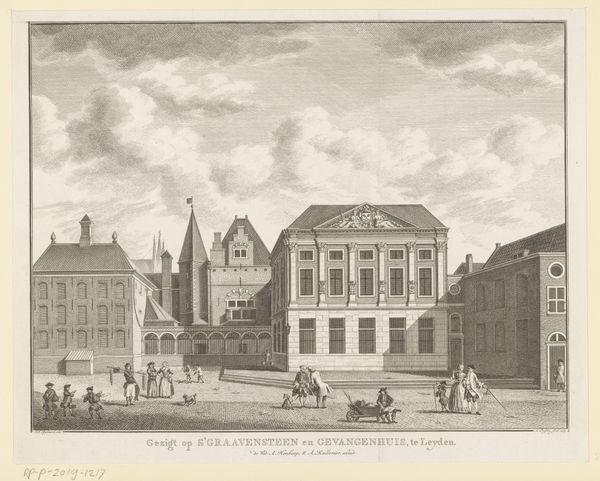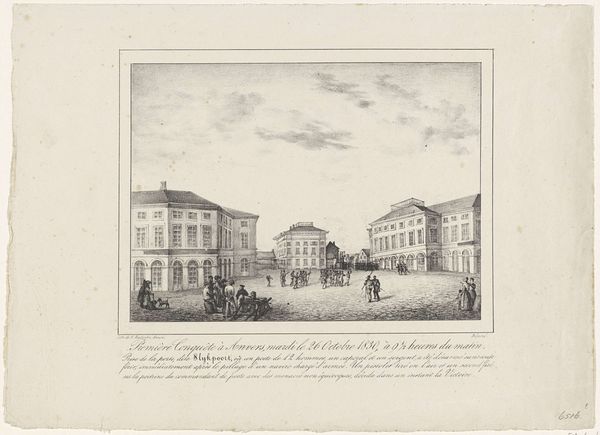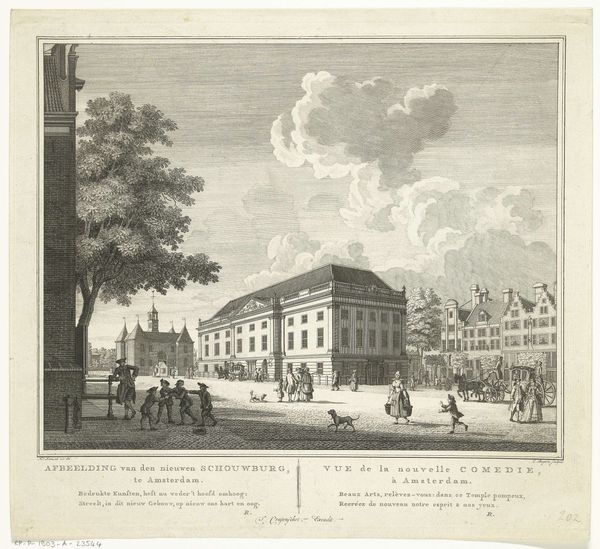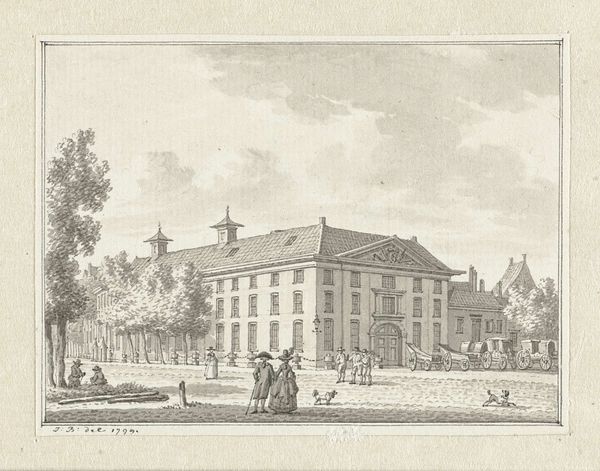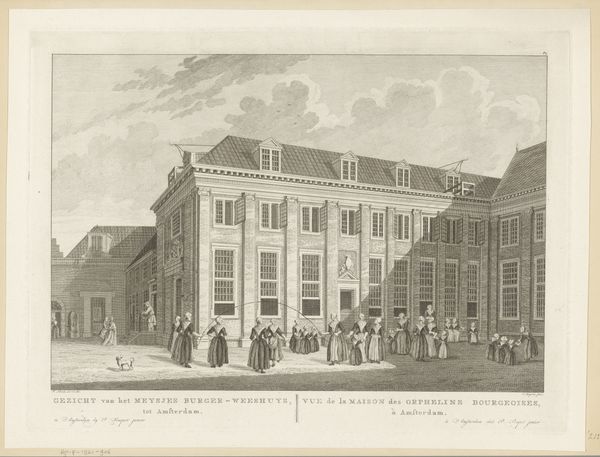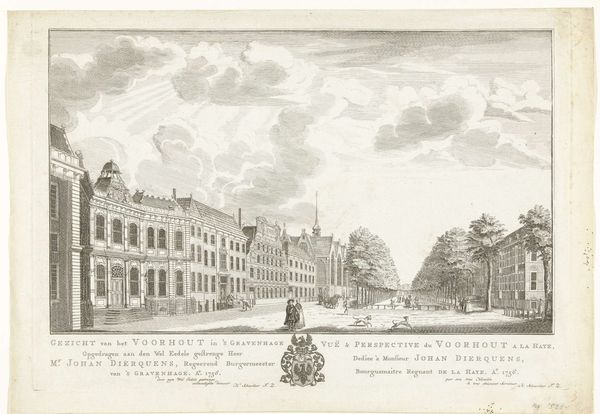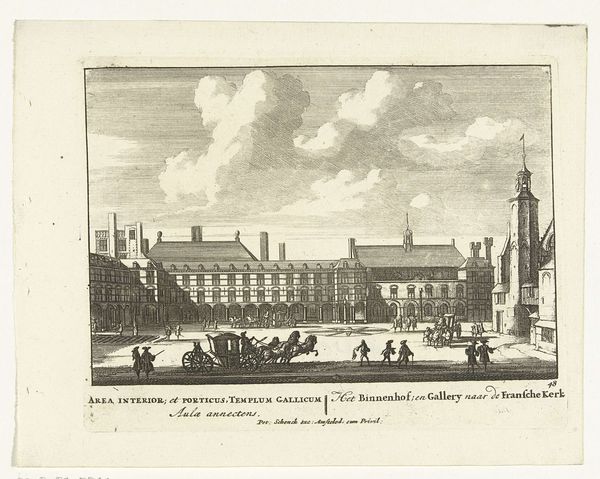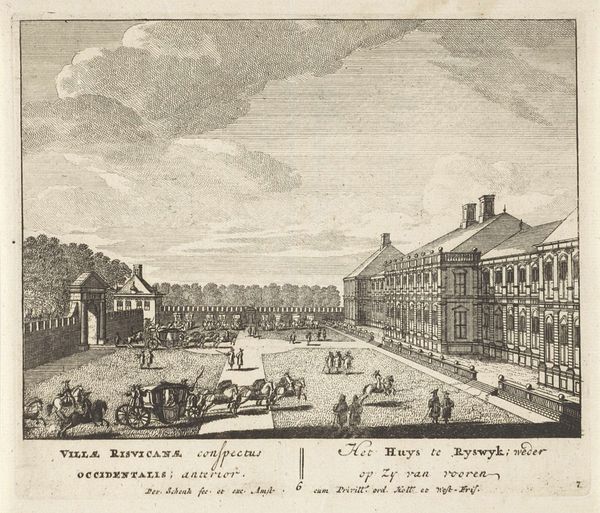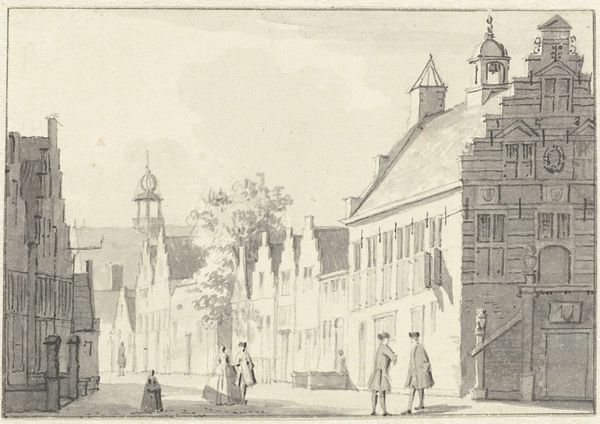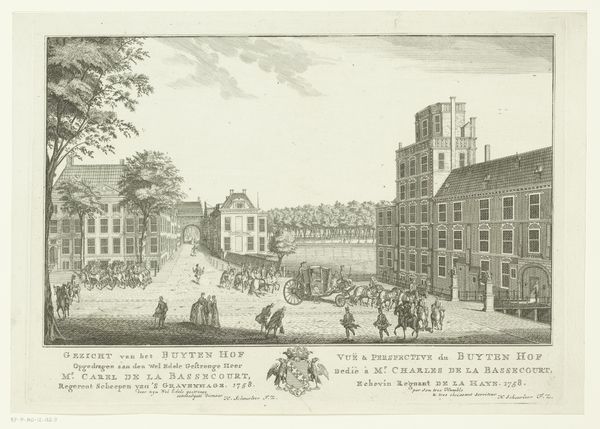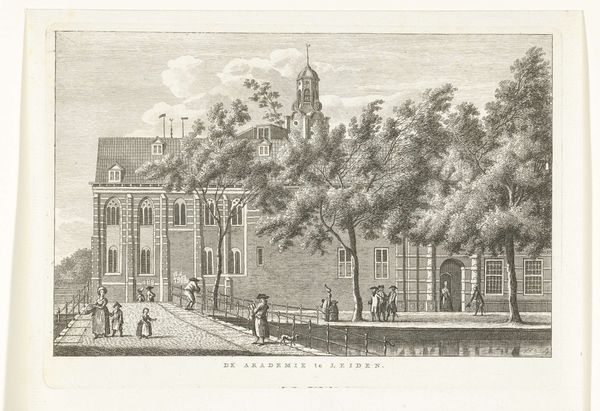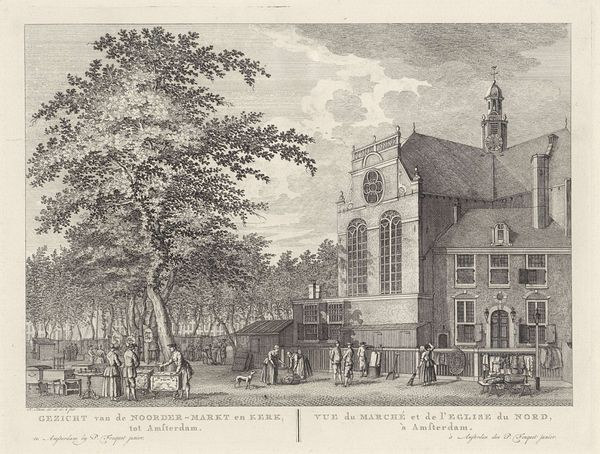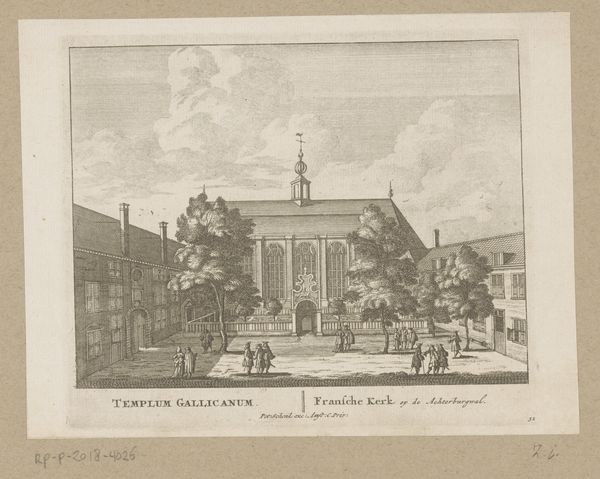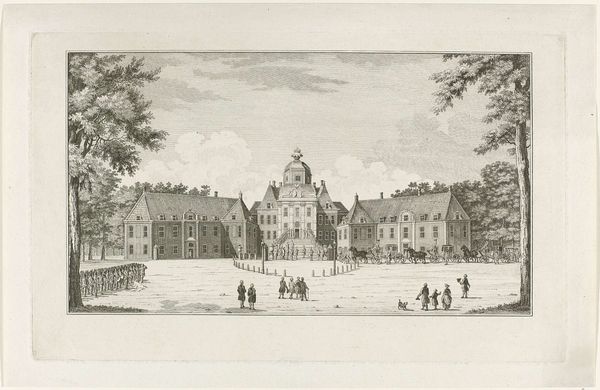
print, engraving
#
neoclacissism
# print
#
cityscape
#
engraving
Dimensions: height 299 mm, width 362 mm
Copyright: Rijks Museum: Open Domain
Curator: Today we're examining Hendrik Leffert Meyling’s "Stadhuis van Groningen," an engraving that offers a striking cityscape rendered between 1810 and 1821. What strikes you most when you first view it? Editor: The vastness of the plaza seems disproportionate to the human activity it contains. The cobblestones feel raw and coarsely rendered, stark against the formal architecture of the city hall. What about you? Curator: Immediately, the geometric clarity captures my attention. The artist skillfully employs line and form, adhering to Neoclassical ideals of order and balance. Look at how the façade of the building becomes a series of horizontal and vertical lines culminating in the symmetry of the triangular pediment. Editor: The raw engraving technique contributes significantly to its aura. One wonders about the engraver, and how much their hand labor went into depicting what are symbols of authority. These processes – the cutting of lines into a plate, the repetitive printing—speak of industry and the slow, careful build of power over time. Curator: Yes, and considering the cultural milieu, this conscious adoption of classicism serves to legitimize the governing power. The very material composition mirrors the desired virtues. The columns assert rational authority! Editor: I can't overlook the materiality inherent in the subject: stone, quarried and meticulously shaped to project an image of timelessness, even permanence. And it's represented through industrial means of reproducibility and dissemination! Curator: And yet, there is the artist’s personal intervention through his chosen mark-making – hatching, cross-hatching, and line weights all impact how our eye is drawn to points within the overall structure. It presents a carefully composed whole—greater than the sum of its parts. Editor: Indeed! To see the depiction as equally as important to consider, rather than distinct from, the labor through which the artist worked brings an awareness of social stratification in representation of this civic power center. The engraving's formal qualities can't be separated from its origins in industry, economy, and culture. Curator: Considering both form and origin allows for a deeper connection with the past, revealing not just what they saw, but the underlying structures that allowed those things to be built and immortalized through art. Editor: An enduring artifact—shaped by a complex interplay between method, material, and meaning.
Comments
No comments
Be the first to comment and join the conversation on the ultimate creative platform.
